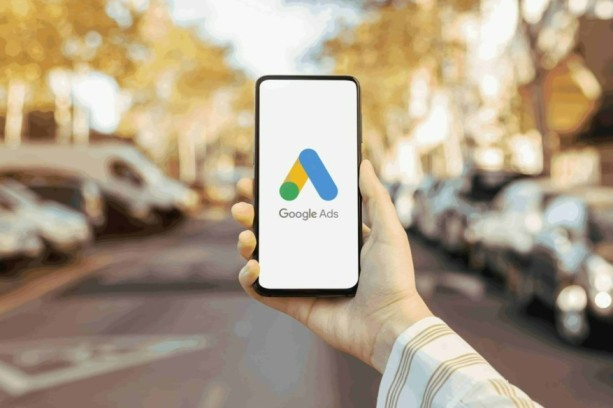Driving traffic to your mobile app is essential for increasing downloads, user engagement, and ultimately, the success of your application. One of the most effective ways to achieve this is through Google Ads, which offers a range of targeting options and ad formats to reach potential users effectively. In this blog, we’ll explore how to use Google Ads to drive traffic to your mobile app, providing step-by-step guidance and best practices for success.

1. Understand Your Target Audience
Before diving into Google Ads, it’s crucial to have a clear understanding of your target audience. Consider the following:
- Demographics: Identify age, gender, location, and interests.
- User Behavior: Understand what problems your app solves and how it fits into users’ lives.
- Competitor Analysis: Analyze your competitors’ ads and audience engagement strategies to refine your approach.
2. Set Clear Goals
Establishing clear goals will help you create effective campaigns. Some common objectives include:
- Increasing App Installs: Focus on driving downloads directly from your ads.
- Boosting In-App Engagement: Target existing users to encourage further interaction with your app.
- Building Brand Awareness: Create campaigns to raise awareness of your app among potential users.
3. Choose the Right Google Ads Campaign Type
Google Ads offers various campaign types, each serving different purposes. For mobile app promotion, consider the following:
- App Campaigns: Specifically designed to promote mobile apps across Google’s vast network, including Google Search, Play Store, YouTube, and other apps.
- Display Ads: Utilize visually appealing banner ads to attract attention and drive users to your app.
- Search Ads: Use text ads that appear in Google search results when users search for relevant keywords.
4. Create an App Campaign
To create an App Campaign, follow these steps:
- Sign in to Google Ads: Go to your Google Ads account.
- Create a New Campaign: Click on “+ New Campaign” and select “App promotion.”
- Choose Your Goal: Select whether you want to focus on installs or in-app actions.
- Select Your App: Enter your app’s name or package name to find it in the Play Store or App Store.
- Set Your Budget: Determine your daily budget and bidding strategy (e.g., Cost Per Install – CPI).
- Define Your Targeting: Specify your target audience based on demographics, locations, and interests.
- Create Ad Assets: Google will automatically create ads using the text and images you provide. Use engaging visuals and compelling copy that highlights your app’s features and benefits.
5. Optimize Your Ads
To ensure your ads are effective, consider the following optimization strategies:
- Ad Variations: Create multiple ad variations to see which resonates best with your audience. Test different headlines, images, and calls to action.
- Use Engaging Visuals: High-quality images or videos can significantly increase engagement. Showcase your app in action to give users a glimpse of its functionality.
- Compelling Call-to-Action (CTA): Use clear and action-oriented CTAs, such as “Download Now” or “Get Started,” to encourage users to take action.
6. Leverage Targeting Options
Google Ads offers robust targeting options to reach the right audience. Consider the following:
- Location Targeting: Focus on specific geographic locations where your target users are likely to be.
- Demographic Targeting: Narrow down your audience based on age, gender, and interests to ensure your ads reach potential users.
- Behavioral Targeting: Utilize insights into user behavior and preferences to create tailored ads that resonate with your audience.
7. Monitor and Analyze Performance
Once your campaigns are live, it’s essential to monitor their performance regularly. Use Google Ads analytics to track metrics such as:
- Impressions: The number of times your ad was displayed.
- Clicks: The number of clicks your ad received.
- Conversion Rate: The percentage of users who downloaded your app after clicking the ad.
- Cost Per Install (CPI): The average cost of acquiring a new user.
8. Make Data-Driven Adjustments
Based on your performance analysis, make necessary adjustments to optimize your campaigns:
- Adjust Bids: Increase or decrease your bids based on ad performance and budget.
- Refine Targeting: Narrow down or expand your targeting criteria based on user engagement and conversion data.
- A/B Testing: Continually test different ad variations to identify which performs best.
9. Retarget Users
Implement retargeting strategies to reach users who showed interest in your app but didn’t download it. You can create retargeting campaigns to remind these potential users about your app, showcasing its features or offering incentives such as discounts or exclusive content.
Conclusion
Using Google Ads to drive traffic to your mobile app can significantly enhance its visibility and increase downloads. By understanding your target audience, setting clear goals, optimizing your ads, and continually analyzing performance, you can create effective campaigns that resonate with potential users. As you navigate the complexities of digital advertising, remember that patience and adaptability are key. With a well-executed Google Ads strategy, you can successfully boost your app’s visibility and achieve your marketing objectives. Start implementing these strategies today to drive traffic and grow your mobile app!


No responses yet